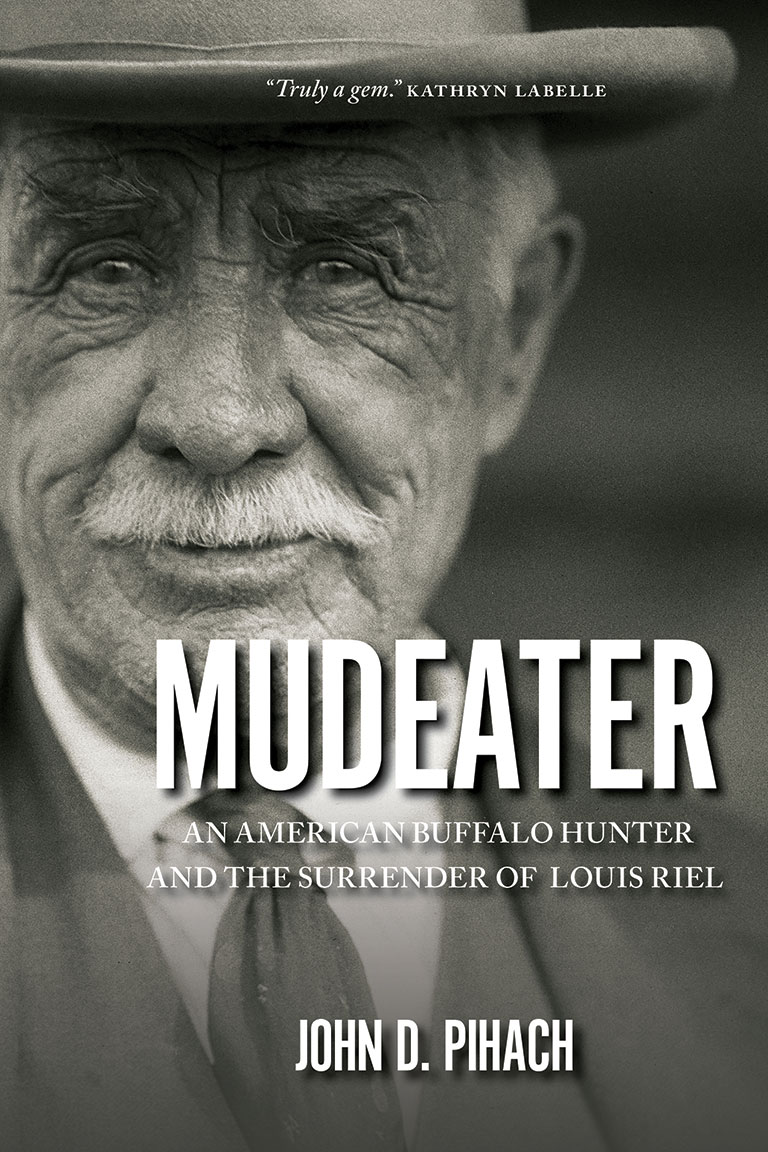Mudeater

Mudeater: An American Buffalo Hunter and the Surrender of Louis Riel
by John D. Pihach
University of Regina Press
272 pages, $27.95
His name was Mudeater — Irvin Mudeater. At least that was what he was called in the United States, where he was known as the son of a Wyandotte chief in Kansas and as a great frontiersman.
In 1882, he came to Canada and adopted a different name and a different ethnicity. Here he was Robert Armstrong, and he let others believe that he was white. In Canada he helped to make history by playing an instrumental role in the surrender of Louis Riel, the Métis leader who was hanged for his crimes — an execution that is today considered to have been unjust.
His involvement in Riel’s arrest in 1885 overshadows the earlier exploits of Mudeater (or Armstrong) in the United States, when he ran wagon trains, drove a stagecoach, and was known as a fearless buffalo hunter. As he wrote in his memoir, “during the summer of 1871 I killed over sixteen hundred buffalo.”
As either Mudeater or Armstrong, this was a restless man, always on the move. After his encounter with Riel, Mudeater lived in Prince Albert and Rosthern in what is now Saskatchewan, in Oklahoma, and in Gleichen and Calgary in Alberta, before moving to California. He died in Los Angeles in 1940.
Despite his role in a pivotal time in history, the story of Mudeater has never been well-known and is almost forgotten today. Author John D. Pihach is helping to correct that with this book, which is remarkable in a couple of ways. For one thing, Pihach started his quest to learn about Mudeater because of a chance comment from a neighbour who said that his ancestor had been the man who captured Riel. Beyond that, Mudeater kept a comprehensive memoir — it was still in the hands of his descendants, and they were quite happy to share it with Pihach.
Any personal reminiscences must be viewed with a healthy dose of skepticism and should be checked against other records whenever possible. Pihach did that as he gathered material to tell the story of Mudeater’s life, using a wide variety of genealogical and historical sources as he fleshed out, confirmed, and corrected this biography.
Pihach’s narrative makes up less than half the book, which also includes a transcript of Mudeater’s memoir. The man’s own words offer another view of his life, one that provides an interesting perspective on the lawless American West.
The memoir is unfiltered and unchallenged but describes a world that is all but forgotten today. It could have been the basis for many western movies. Mudeater’s story is at times ugly, at times exciting, and for the most part fascinating.
He clearly did not identify with his Native American community. He tells of encounters with Indigenous people as an outsider would write the story, and he uses words such as “redskin” that are jarring today. On the other hand, these words help to convey the language of the day as well as his own attitude.
He wrote at length of his ability to kill buffalo, earning at one point earning eight dollars for every calf he killed. He also noted that the buffalo were an important source of food for Indigenous peoples — again writing as if denying his own ancestry.
Mudeater met Riel in Montana in 1882, and Riel later claimed to have saved the life of Mudeater by telling others not to claim the price on the latter’s head. The book includes several accounts of Riel’s apprehension, including words from various men involved in the capture. In effect, with Pihach’s inclusion of source documents, we can analyze the story for ourselves.
It might have seemed that every possible detail about Riel has already been published; after all, it has been more than 130 years since he was hanged. Yet with his book Mudeater Pihach has brought new light to the story. He helps readers to gain a better understanding of the political forces and the public opinion that led to the hunt for and surrender of Riel.
Themes associated with this article
Advertisement




